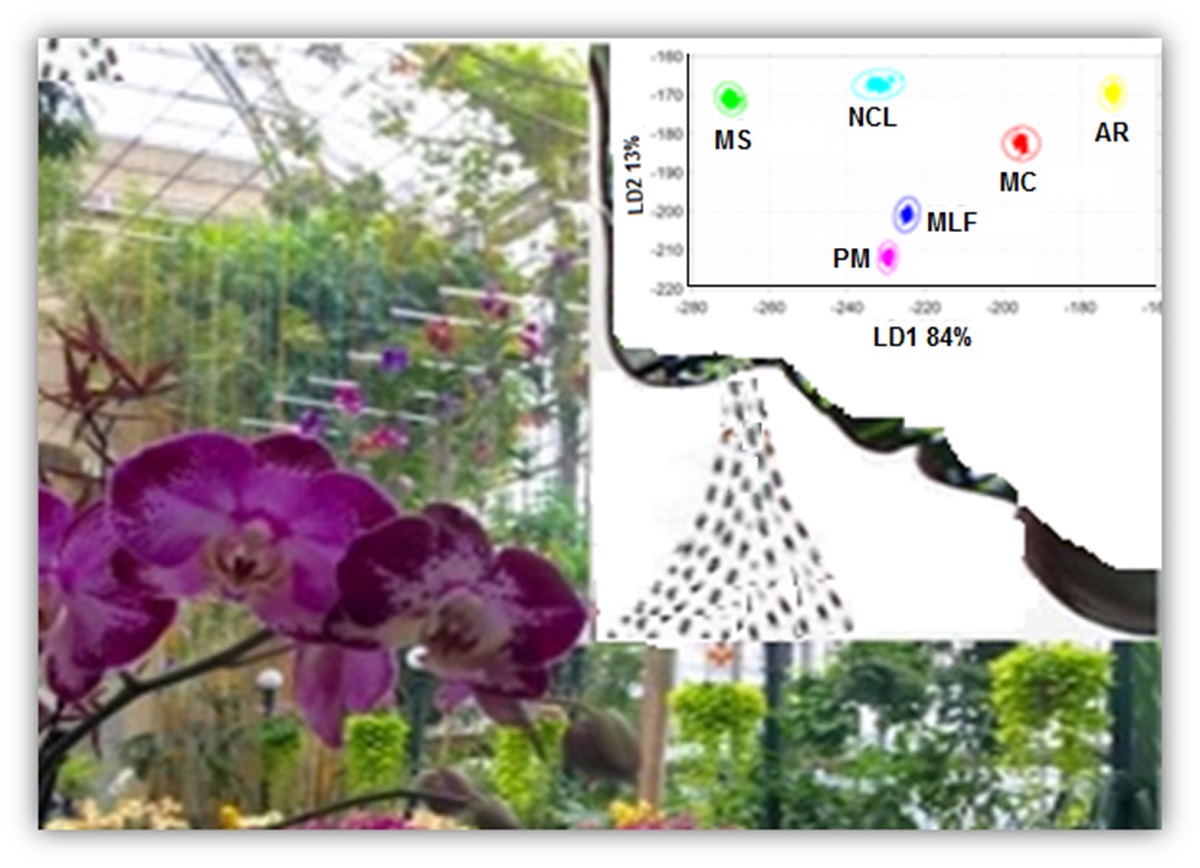Mints emit diverse scents that exert specific biological functions and are relevance for applications. The current work strives to develop electronic noses that can electronically discriminate the scents emitted by different species of Mint as alternative to conventional profiling by gas chromatography. Here, 12 different sensing materials including 4 different metal oxide nanoparticle dispersions (AZO, ZnO, SnO2, ITO), one Metal-Organic Frame as Cu(BPDC), and 7 different polymer films including PVA, PEDOT: PSS, PFO, SB, SW, SG, PB were used for functionalizing of QCM sensors. The purpose was to discriminate six economically relevant Mint species (Mentha x piperita, Mentha spicata, Mentha spicata ssp. crispa, Mentha longifolia, Agastache rugosa, and Nepeta cataria). The adsorption and desorption datasets obtained from each modified QCM sensor were processed by three different classification models including Principal Component Analy-sis (PCA), Linear Discriminant Analysis (LDA), and k-Nearest Neighbor Analysis (k-NN). This allowed discriminating the different Mints with classification accuracies of 97.2% (PCA), 100% (LDA), and 99.9% (k-NN), respectively. Prediction accuracies with a repeating test measurement reached up to 90.6% for LDA, and 85.6% for k-NN. These data demonstrate that this electronic nose can discriminate different Mint scents in a reliable and efficient manner.

